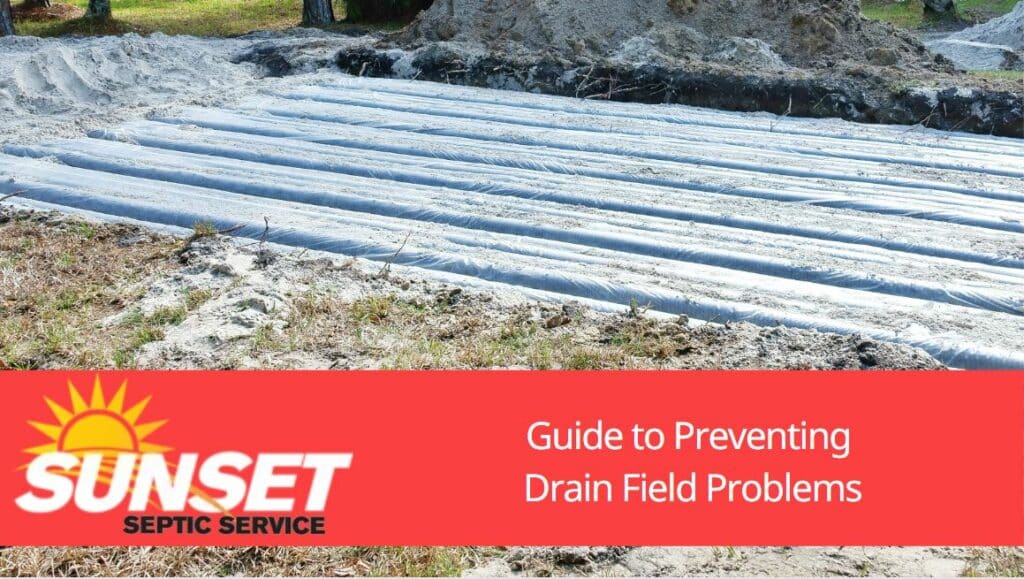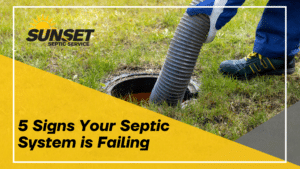Whether you’re buying a home with a septic tank for the first time or you’ve lived in one all your life, it’s not uncommon to have questions about how your septic system works. These questions can quickly become more pressing, however, when you have obvious trouble with your drain field or other components of your system. Everyone knows the best cure is to prevent a problem before it starts if you can. Here’s a quick and dirty guide to understanding how your drain field works, why it’s vital, and what you can do to protect it.
Understanding How Your Drain Field Works
Sometimes called a leach field, a septic drain field is the part of your system responsible for disbursing liquid waste from your tank. Solids sit on the bottom of your septic tank, and oils rise to the surface; in the middle, water slowly leaches through specialized gravel beds designed specifically to remove impurities. After it leaves your drain field, water processed by your septic system is often cleaner than that of many municipal water systems.
Why You Have to Protect Your Drain Field
One of the most important parts of caring for your septic system is protecting the drain field from damage or disruption. This means it’s not ideal for planting bushes, shrubs or trees above the drain lines, and absolutely vital not to drive over or park on the drain field. It’s not just what goes on top of your drain field you must be concerned about, either.
What goes in can be just as destructive, especially if you’re pouring household chemicals that interfere with delicate bacterial balances down the drain or flushing anything other than toilet waste and septic-safe toilet paper. Heavy water usage can also cause issues, as introducing more water than the system can process through the leach field will eventually cause the septic tank to overfill. This saturates the soil, damages the top of the drain field, and can lead to messy problems.
Learning to Spot the Signs of Trouble Brewing
One of the first telltale signs of potential septic trouble is a patch of bright green, thriving grass compared to the rest of your lawn. Swampy ground around the leach field is another bad sign, especially if there are foul odors in the equation.
Prevent Trouble Before It Starts
It’s not always easy to know what to do with greases, oils, and fats, but you definitely should not pour them down the drain. This can cause a thick layer of damaging sludge, eventually infiltrating the leach field pipes.
These clogs slow the rate at which your drain field can process water and liquid waste and can also lead to favorable conditions for the formation of bio-mat, a black, semi-solid, and essentially watertight layer of trouble. Fortunately, septic shock treatments and specialized enzymes can make quick work of bio-mat.
Guard Vigilantly Against Tree Roots
Tree roots can reach farther, sprawl more and do damage faster than you might realize. The root systems for some trees can stretch an astounding distance. Root barriers can be an effective solution, but if they aren’t installed at the time of building your system, it’s possible to add them if future root intrusion creates a need for removal.
Adopting Good Practices Early
Why wait for problems to create stress and complicate your life? Septic and sewer problems are far from a walk in the park, so avoiding them at all costs is a reasonable approach. Fortunately, it’s relatively simple to be a good steward of a septic system and drain field. Just remember to invest in frequent inspections and timely pumping, be mindful of harsh household cleansers and chemicals, don’t park or drive over the drain field and keep an eye out for unusual changes.
With a bit of maintenance and attention, your septic system can work for decades without any trouble. Working with a local septic expert can help keep your drain field free and clear. Sunset Septic can help you establish the current condition of your system and work out a maintenance plan designed to keep things humming as long as possible.




